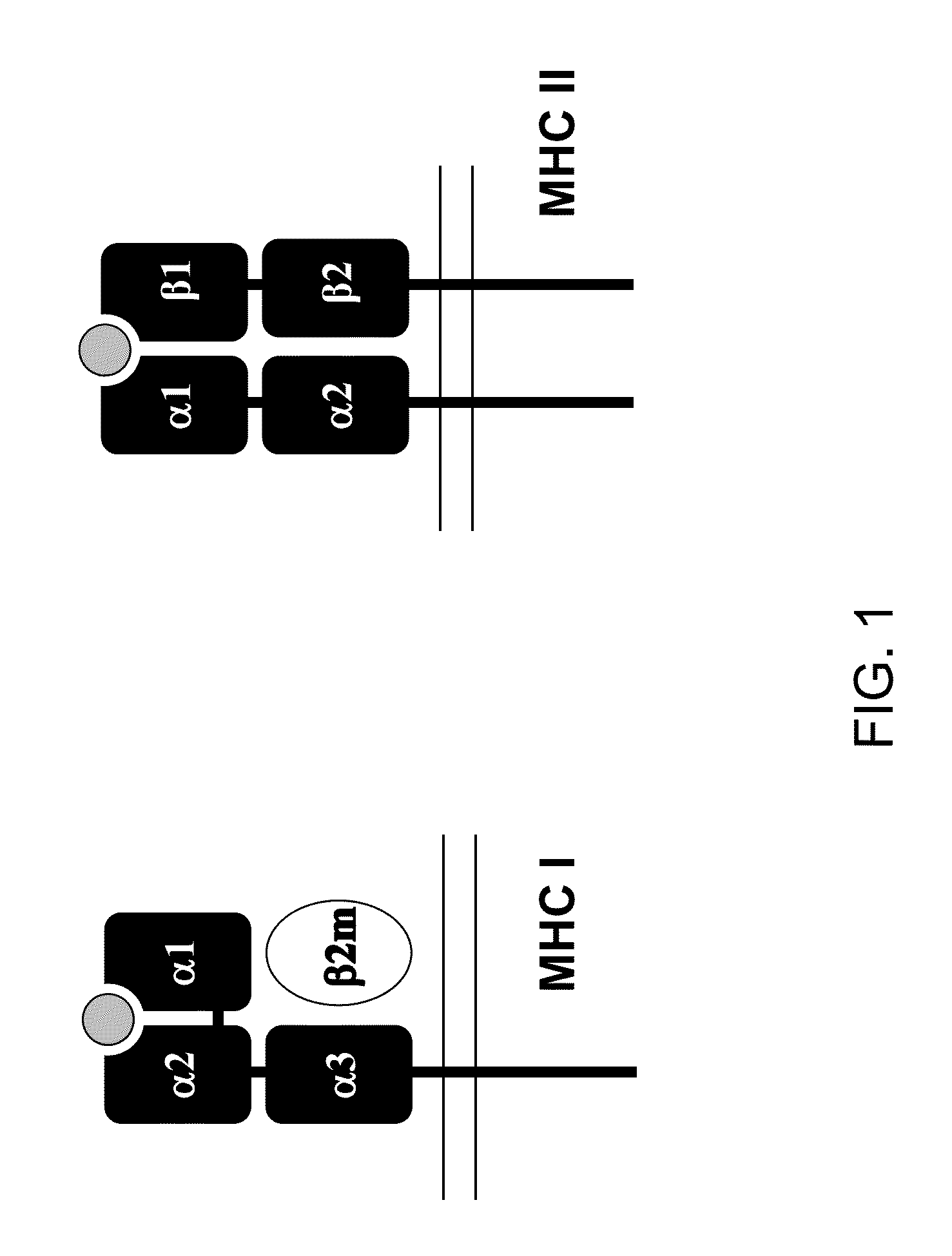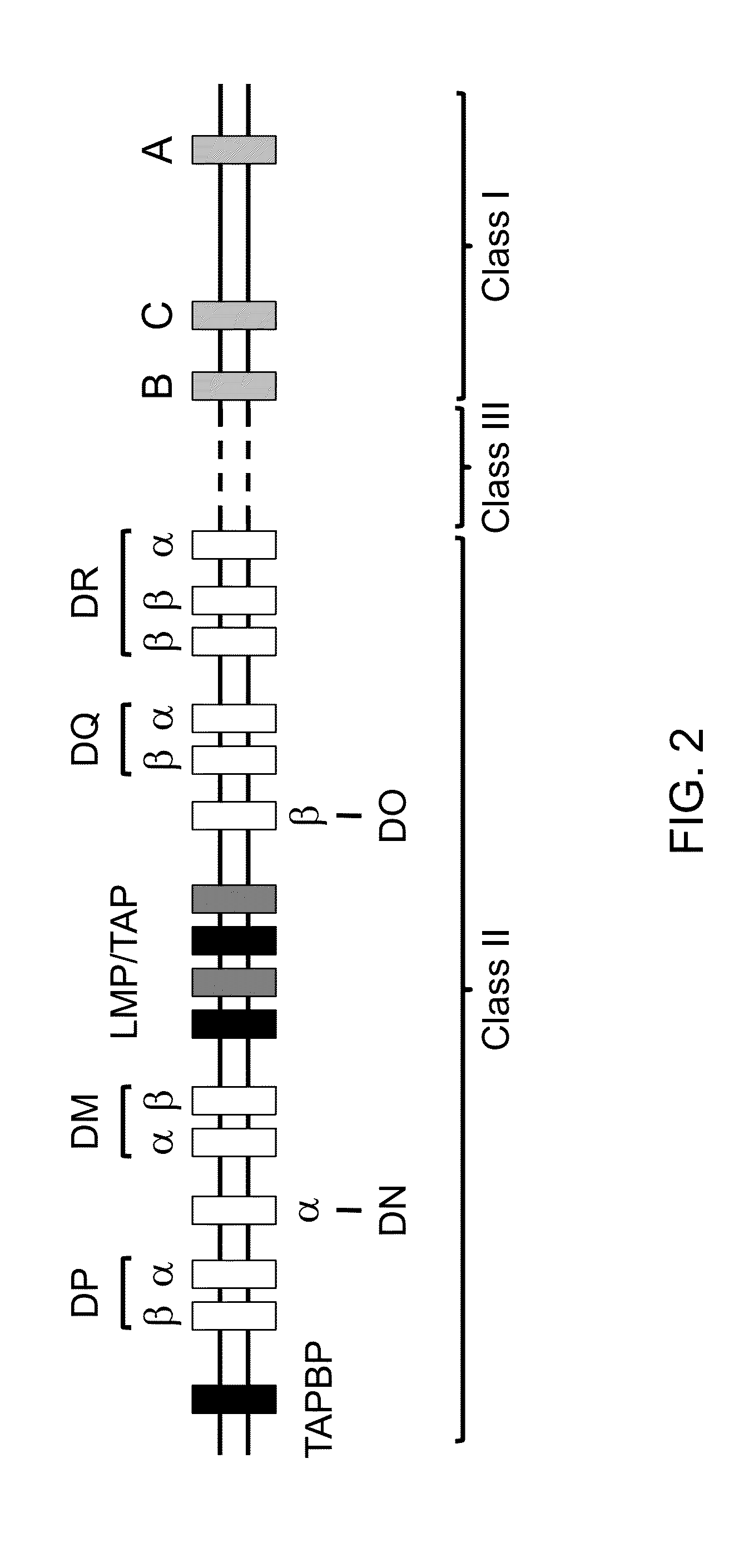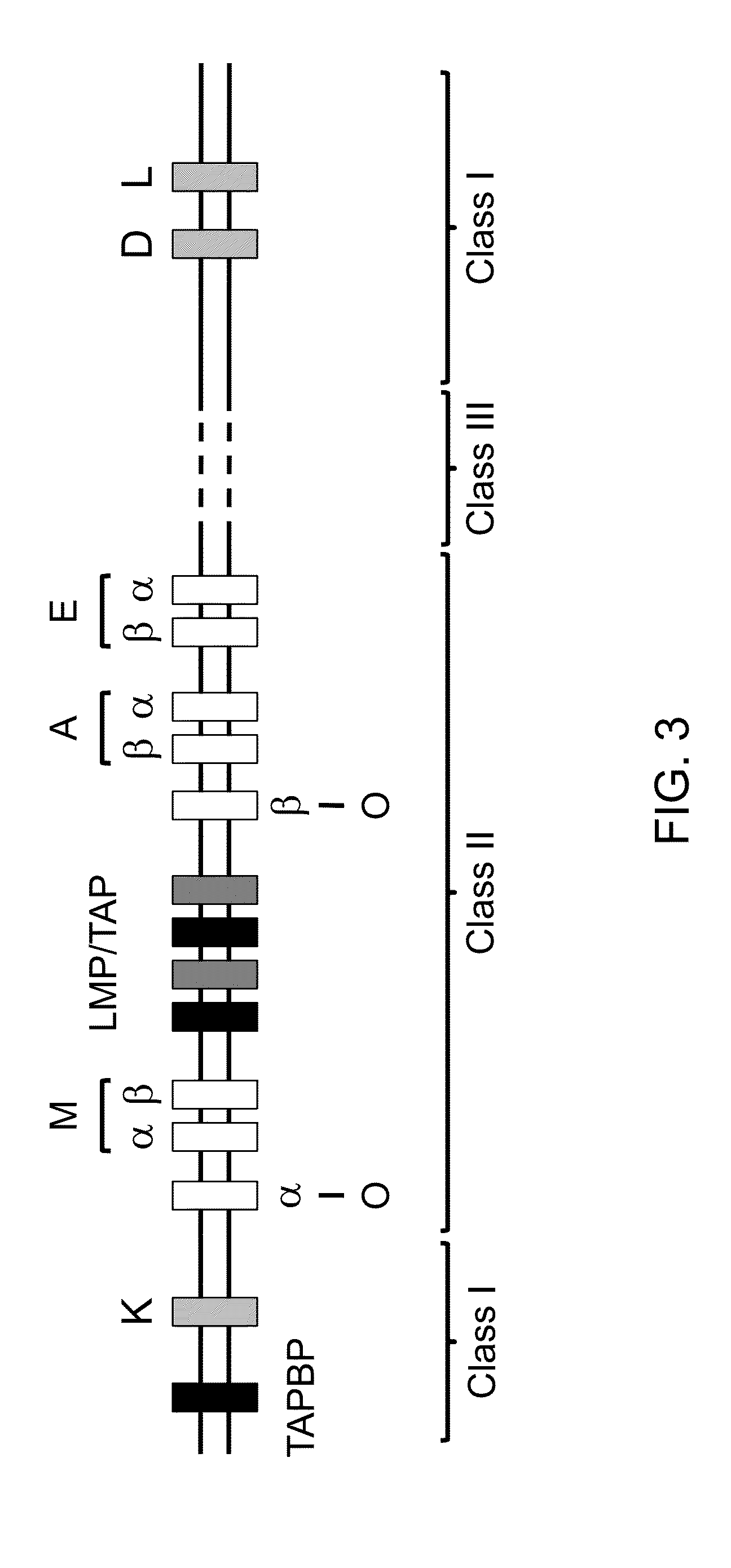Genetically modified major histocompatibility complex mice
a histocompatibility complex and mouse technology, applied in the field of genetically modified nonhuman animals, can solve problems such as the destruction of cells presenting such peptides
- Summary
- Abstract
- Description
- Claims
- Application Information
AI Technical Summary
Benefits of technology
Problems solved by technology
Method used
Image
Examples
example 1
Engineering a Chimeric Human / Mouse MHC II Locus and Generation of Chimeric MHC II Mice
example 1.1
Deletion of the Endogenous MHC Class II H-2A and H-2E Loci
[0098]The targeting vector for introducing a deletion of the endogenous MHC class II H-2Ab1, H-2Aa, H-2Eb1, H-2Eb2, and H-2Ea genes was made using VELOCIGENE® genetic engineering technology (see, e.g., U.S. Pat. No. 6,586,251 and Valenzuela et al., supra). Bacterial Artificial Chromosome (BAC) RP23-458i22 (Invitrogen) DNA was modified to delete the endogenous MHC class II genes H-2Ab1, H-2Aa, H-2Eb1, H-2Eb2, and H-2Ea.
[0099]Briefly, upstream and downstream homology arms were derived by PCR of mouse BAC DNA from locations 5′ of the H-2Ab1 gene and 3′ of the H-2Ea gene, respectively. As depicted in FIG. 5, these homology arms were used to make a cassette that deleted ˜79 kb of RP23-458i22 comprising genes H-2Ab1, H-2Aa, H-2Eb1, H-2Eb2, and H-2Ea of the MHC class II locus by bacterial homologous recombination (BHR). This region was replaced with a hygromycin cassette flanked by Iox66 and Iox71 sites. The final targeting vector f...
example 1.2
Generation of Large Targeting Vector (LTVEC) Comprising Humanized H-2Eb1 and H-2Ea Genes
[0103]A targeting vector to introduce humanized MHC II sequences was designed as depicted in FIG. 5. Using VELOCIGENE® genetic engineering technology, Bacterial Artificial Chromosome (BAC) RP23-458i22 DNA was modified in various steps to: (1) create a vector comprising a functional I-E α exon 1 from BALB / c H-2Ea gene (FIG. 5A); (2) create a vector comprising replacement of exons 2 and 3 of mouse I-E β gene with those of human DRβ1*04 and replacement of exons 2 and 3 of mouse I-E α with those of human DRα1*01 (FIG. 5B); (3) create a vector carrying exons 2 and 3 of human DRβ1*04 amongst remaining mouse I-E β exons, and exons 2 and 3 of human DRα1*01 amongst remaining mouse I-E α exons including a functional I-E α exon 1 from BALB / c mouse (step (1) (FIG. 5C); and (4) remove a cryptic splice site in the vector generated in (3) (FIG. 5D).
[0104]Specifically, because in the C57Bl / 6 mice, the I-E α gene...
PUM
| Property | Measurement | Unit |
|---|---|---|
| size | aaaaa | aaaaa |
| polymorphic | aaaaa | aaaaa |
| non-covalent | aaaaa | aaaaa |
Abstract
Description
Claims
Application Information
 Login to View More
Login to View More - R&D
- Intellectual Property
- Life Sciences
- Materials
- Tech Scout
- Unparalleled Data Quality
- Higher Quality Content
- 60% Fewer Hallucinations
Browse by: Latest US Patents, China's latest patents, Technical Efficacy Thesaurus, Application Domain, Technology Topic, Popular Technical Reports.
© 2025 PatSnap. All rights reserved.Legal|Privacy policy|Modern Slavery Act Transparency Statement|Sitemap|About US| Contact US: help@patsnap.com



